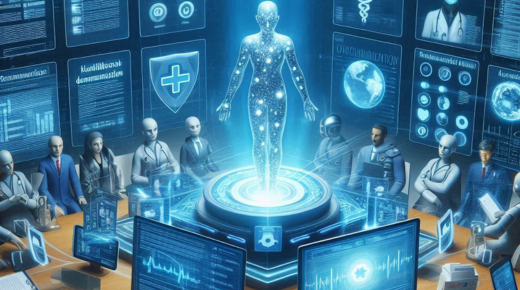In the ever-evolving world of healthcare, artificial intelligence (AI) is becoming a transformative force, reshaping how medical professionals handle clinical documentation. One of the most significant advancements in this space is the development of AI medical scribe technology. These intelligent systems are designed to support physicians by automating the note-taking and documentation process during patient interactions, ultimately improving efficiency, accuracy, and patient care.
What is an AI Medical Scribe?
An AI medical scribe is a virtual assistant powered by machine learning and natural language processing (NLP) technologies. It listens to patient-doctor conversations in real-time, extracts relevant clinical information, and converts it into structured medical notes. These notes are then seamlessly integrated into the electronic health record (EHR) system, saving time and reducing the administrative burden on healthcare providers.
Unlike traditional medical scribes who require training, salaries, and constant supervision, AI scribes are scalable, cost-effective, and available 24/7. This innovation allows doctors to focus more on their patients rather than on computer screens, which significantly enhances the quality of care delivered.
The Evolution of Medical Scribe AI
The concept of a medical scribe AI has evolved rapidly with advancements in speech recognition and deep learning. Initially, voice recognition tools simply transcribed speech into text. However, today’s AI scribes go several steps further by understanding medical terminology, capturing contextual information, and generating clinically relevant summaries.
Some of the leading AI scribing tools can even distinguish between multiple speakers, detect nuances in tone, and adapt to different medical specialties. This level of sophistication ensures the production of accurate, context-aware documentation, minimizing the need for manual corrections or editing.
AI Medical Transcription: A Game Changer
AI medical transcription is another area that has seen a revolution. Medical transcription has long been a vital component of healthcare documentation, but traditional methods were labor-intensive, prone to error, and often involved significant delays. AI-driven transcription software changes the game by offering instant, high-quality transcription services.
These tools use advanced algorithms to convert spoken language into text, understand medical jargon, and format the output according to documentation standards. This capability helps healthcare facilities maintain up-to-date records, support compliance, and streamline the billing process.
Benefits of AI Medical Scribing
-
Time-Saving: Physicians save hours each week on documentation tasks, allowing them to see more patients or focus on research and professional development.
-
Accuracy and Consistency: AI reduces human error and maintains a high level of consistency across medical records.
-
Improved Patient Experience: With less time spent typing notes, doctors can engage more meaningfully with patients.
-
Cost-Effective: AI scribing tools reduce the need for full-time transcription staff or outsourced services.
-
Compliance and Security: Modern AI transcription systems are HIPAA-compliant and include security features to ensure patient data is protected.
The Future of Medical Transcription Software
As AI continues to evolve, medical transcription software will become even more intelligent and intuitive. Future iterations will likely include predictive text capabilities, automated coding for billing, and real-time alerts for potential clinical errors. Integration with wearable health devices and telemedicine platforms could further enhance the utility and scope of these tools.
The healthcare industry is moving toward a model where smart documentation tools are not just a luxury but a necessity. Hospitals, clinics, and private practices that adopt these technologies early will be better positioned to improve operational efficiency and patient outcomes.
Final Thoughts
The integration of AI medical transcription and scribing solutions represents a monumental shift in healthcare delivery. These tools not only alleviate the administrative burden on providers but also enhance documentation quality and support better clinical decisions. As AI becomes more embedded in healthcare systems, medical professionals can look forward to a future where technology truly works as an ally, not an obstacle.
By embracing AI-powered solutions today, healthcare providers are paving the way for a more efficient, accurate, and patient-focused tomorrow.




